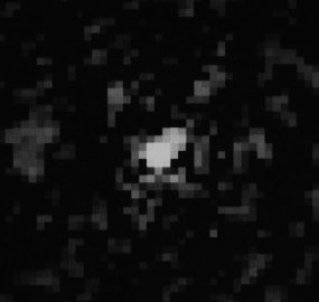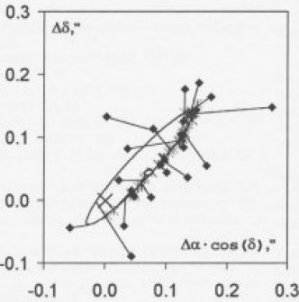

 |
 |
At left is an interferometric image of the binary star Beta Leonis Minoris. Beta LMi A is at center; Beta LMi B is the small blip a mere 0.06 seconds of arc to the upper right of Beta A. At right is the apparent orbit of Beta B with Beta A at the apparent focus (the cross toward lower left). In reality, the two orbit each other about a center of mass that lies on a line between them. The orbit is seen as projected against the plane of the sky. (Left: W. M. Keck Observatory from K. Matthews, A. M. Ghez, A. J. Weinberger, and G. Neugebauer in Pub. of the Astr. Soc. of the Pacific, vol 108, 615, 1996; right: From G. Gontcharov and O. V. Kiyaeva in Astronomy and Astrophysics, vol. 391, 647, 2002.) |